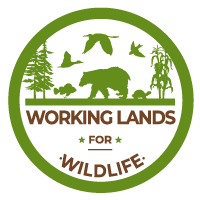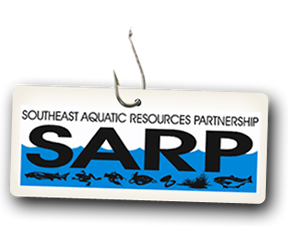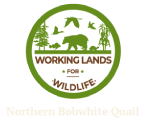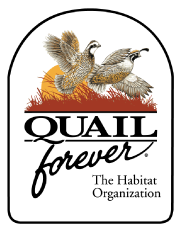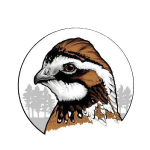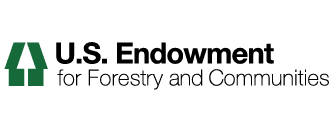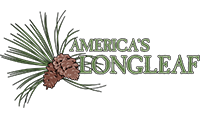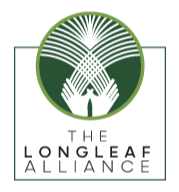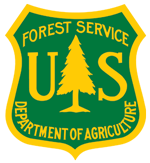Landscape Partnership Resources Library
Watering Facility - CPS 614
A watering facility is a means of providing drinking water to livestock or wildlife.
Streambank and Shoreline Protection - CPS 580
Treatment(s) used to stabilize and protect banks of streams or constructed channels, and shorelines of lakes, reservoirs, or estuaries.
Stream Habitat Improvement and Management - CPS 395
Maintain, improve or restore physical, chemical and biological functions of a stream, and its associated riparian zone, necessary for meeting the life history requirements of desired aquatic species.
Riparian Forest Buffer - CPS 391
An area predominantly trees and/or shrubs located adjacent to and up-gradient from watercourses or water bodies.
Working Lands for Wildlife National Landowner Forum: Perspectives and Recommendations
In May 2016, 26 private landowners from across the country met in Denver, Colorado to talk with NRCS staff about what is working in the Working Lands for Wildlife partnership and what opportunities exist for improvement. Jointly coordinated by Partners for Conservation and NRCS, and including funding support from the Intermountain West Joint Venture, the 2-day meeting provided a forum to share stories of success and challenges in order to maximize outcomes with future opportunities.
2016 Southeastern Forest Private Lands Partnership Forum
March 1, Pensacola, Florida Session Recommendations
Conservation Choices for Wildlife: Golden-winged Warbler and Other Forest-dependent Species
This guide outlines seven key conservation practices recommended to forest landowners who want to sustainably manage forests to benefit wildlife and forest health. USDA’s Natural Resources Conservation Service (NRCS) and conservation partners work with forest landowners to plan and implement these practices that benefit a variety of species, including the golden-winged warbler. This assistance includes the development of a custom forest management plan as well as financial support to help cover part of the costs of implementing the practices. Technical and financial assistance are available through the Farm Bill, the largest source of federal funding for private lands conservation.
Executive Summary - Present and Future Possibilities of Landscape Scale Conservation
The Landscape Conservation Cooperative (LCC) program was created under a secretarial order to develop regional conservation partnerships – under the Department of the Interior – that aimed to coordinate regional conservation planning in response to climate change impacts. Because they were partner-driven efforts, each of the 22 LCCs followed a distinct trajectory and implemented diverse projects, meaning that there is value in exploring how specific LCCs, such as the AppLCC, approached regional conservation. This study assesses the successes, limitations, and impacts of the AppLCC, with the aim of providing insights for future regional conservation partnership.
Presentation by Maddie Brown - Research Results - Partnership
pdf copy of PPT slides used by Dr. Brown in "reporting out" to the Partnership on the research project of the AppLCC Partner organizational representatives. See report for full methodology etc. and the "Partner Dashboard" that graphically captures the research results.
2018 AFWA Landscape Conservation Collaboration: A White Paper
Submitted by Mark Humpert, to the AFWA Directors at the 83rd North American Wildlife and Natural Resources Conference held in Norfolk, Virginia on March 26-30, 2018. Based on the contributions by regional partners and state representatives with final paper prepared by AFWA’s Wildlife Resource Policy Committee Work Group. Working Group Members: Jim Douglas, Nebraska Game and Parks Commission (Chair); Dave Smith, Intermountain West Joint Venture; Tony Wasley, Nevada Department of Wildlife, Ed Schriever, Idaho Department of Fish and Game; Sara Parker Pauley, Missouri Department of Conservation; Kelley Meyers, US Fish and Wildlife Service; Kenny Dinan, US Fish and Wildlife Service; Ed Carter, Tennessee Wildlife Resources Agency; Greg Wathen, Tennessee Wildlife Resources Agency; Thomas Eason, Florida Fish and Wildlife Conservation Commission; Ken Elowe, US Fish and Wildlife Service; David Whitehurst, Virginia Department of Game and Inland Fisheries; Elsa Haubold, US Fish and Wildlife Service; Keith Sexson, Kansas Department of Wildlife Parks and Tourism; Bill Moritz, Wildlife Management Institute; Mike Carter, Playa Lakes Joint Venture; Mark Humpert, Association of Fish and Wildlife Agencies (staff).
Fact Sheet: Assessing Future Energy
Assessing Future Energy Development Across the Appalachian Region
Identifying the Valued Ordinary, as a Step toward Scenic Landscape Conservation. Visual Resource Stewardship Conference Landscape and Seascape Management in a Time of Change.
The Georgia Scenic Byways program (GDOT, 2017) is a “grassroots effort … to identify, preserve, promote and protect treasured corridors throughout the state.” There are fifteen such corridors designated by Georgia DOT, their only protection is a restriction on roadside billboards. Despite frequent avocation of the beauties of Georgia highways, there is no systematic articulation of the physical attributes of a scenic landscape, how such attributes would be identified and thus protected, nor the expertise or resources to devote to new discoveries.
Integrating Visual and Cultural Resource Evaluation and Impact Assessment for Landscape Conservation Design and Planning
While there is an increased need for cultural resource conservation and management in North America, there are few approaches that provide robust integration and combined assessment of visual and cultural resources. Determining the scenic value of important views and identifying potential risk for loss of that view are core components needed to design protection preserving scenic quality and the cultural resources contributing to scenic value and overall sense of place.
The use of crowdsourced and georeferenced photography to aid in visual resource planning and conservation
The advent of Web 2.0 and the growth of social media platforms have fostered an environment for the documentation and sharing of landscape imagery. In addition to looking at the site scale, using these big data allows for visual landscape assessment at the regional scale. The onset of Marcellus shale gas development in the state of Pennsylvania concurrent with the rapidly widening availability of crowd-sourced citizen photography has provided a valuable opportunity to study crowdsourced and georeferenced photography as an aid in visual resource conservation design and planning. As Trombulak and Baldwin (2010) outline, the goals for this work include identifying spatially explicit measures of change in the landscape, being able to predict spatially explicit threats to the landscape, recognizing sites within the region that are important or irreplaceable, and prioritizing areas for conservation action to address pressures and preserve/conserve exceptional sites in the future.
CCVA Fact Sheets: Forested Stream and / or Seepage
Forested Stream and/or Seepage Forested stream environments are typically found in the buffer zones between forested land and stream banks, often known as riparian zones. Stream headwaters and seepage areas occur where ground water percolates to the surface through muck, mossy rock, and nettles. It can also be found under rocks, among gravel, or cobble where water has begun to percolate in areas near open water. Breeding grounds are commonly found beneath mosses growing on rocks, on logs, or soil surfaces in these types of seepage areas. Predicted climate change will largely impact changes in temperature and moisture availability in forested stream and/or seepage systems, likely having a cascading effect on a species habitat and increasing stress to many of these species. The Appalachian LCC funded NatureServe to conduct vulnerability assessments on a suite of plants, animals, and habitats within the Appalachians. These assessments can be used as an early warning system to alert resource managers about changing conditions.
CCVA Fact Sheet: Open Woodlands
Open Woodlands Used generally to describe low density forests, open woodland ecosystems contain widely spaced trees whose crowns do not touch, causing for an open canopy, insignificant midstory canopy layer, sparse understory and where groundcover is the most obvious feature of the landscape dominated by diverse flora (grasses, forbes, sedges). Open Woodlands provide habitat for a diverse mix of wildlife species, several of which are of conservation concern, such as Red Headed Woodpecker, Prairie Warbler, Kentucky Warbler, Northern Bobwhite and Eastern Red Bat. Predicted climate change will largely impact changes in temperature and moisture availability in open woodlands systems, likely having a cascading effect on a species habitat and increasing stress to many of these species. The Appalachian LCC funded NatureServe to conduct vulnerability assessments on a suite of plants, animals, and habitats within the Appalachians. These assessments can be used as an early warning system to alert resource managers about changing conditions.
CCVA Fact Sheet: Forest and Woodlands
Forest/Woodland habitats describe large areas primarily dominated by trees, with moderate ground coverage, such as grasses and shrubs. Density, tree height, and land use may all vary, though woodland is typically used to describe lower density forests. A forest may have an open canopy, but a woodland must have an open canopy with enough sunlight to reach the ground and limited shade. Predicted climate change will largely impact changes in temperature and moisture availability in forest/ woodlands systems, likely having a cascading effect on a species habitat and increasing stress to many of these species. The Appalachian LCC funded NatureServe to conduct vulnerability assessments on a suite of plants, animals, and habitats within the Appalachians. These assessments can be used as an early warning system to alert resource managers about changing conditions.
CCVA Fact Sheet: Meadows and Marshlands
Meadows are open grasslands where grass and other non-woody plants are the primary vegetation. With no tree coverage, meadows are typically open, sunny areas that attract flora and fauna that require both ample space and sunlight. These conditions allow for the growth of many wildflowers and are typically important ecosystems for pollinating insects. Marshlands are like meadows in that they typically have no tree coverage and host primarily grasses and woody plants. However, a defining characteristic of marshlands is their wetland features. Predicted climate change will largely impact changes in temperature and moisture availability in meadows and marshlands systems, likely having a cascading effect on a species habitat and increasing stress to many of these species. The Appalachian LCC funded NatureServe to conduct vulnerability assessments on a suite of plants, animals, and habitats within the Appalachians. These assessments can be used as an early warning system to alert resource managers about changing conditions.


